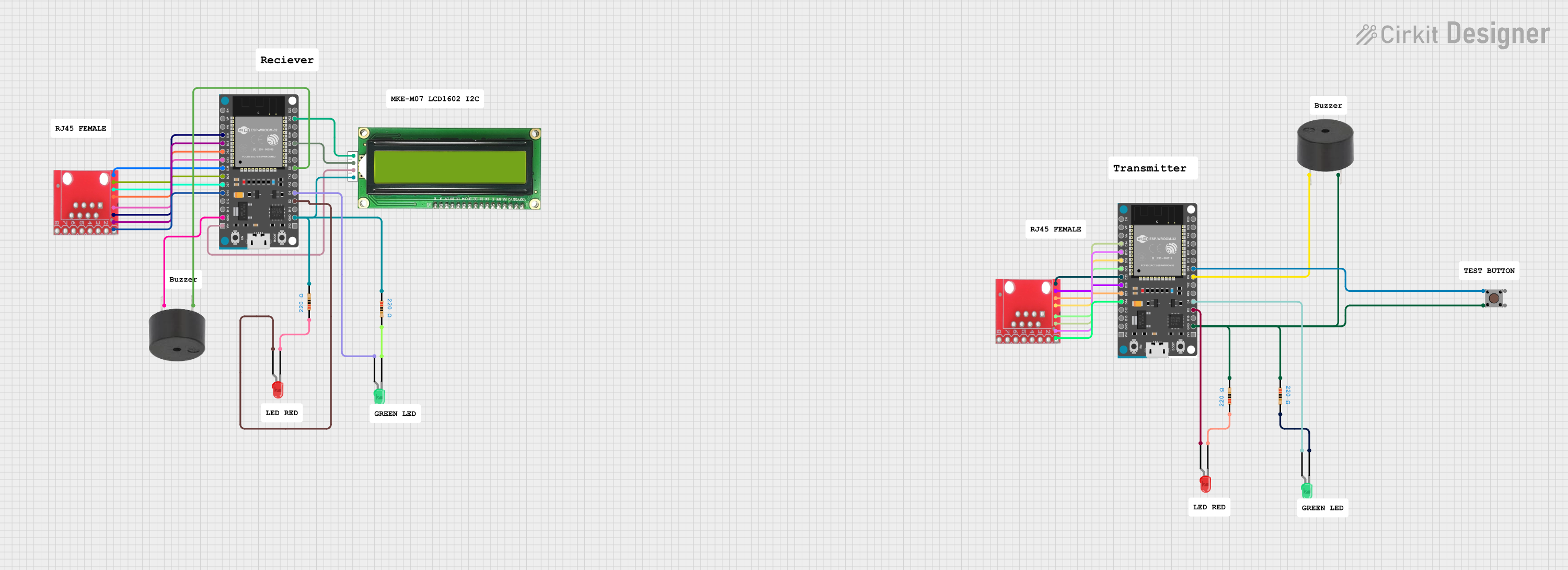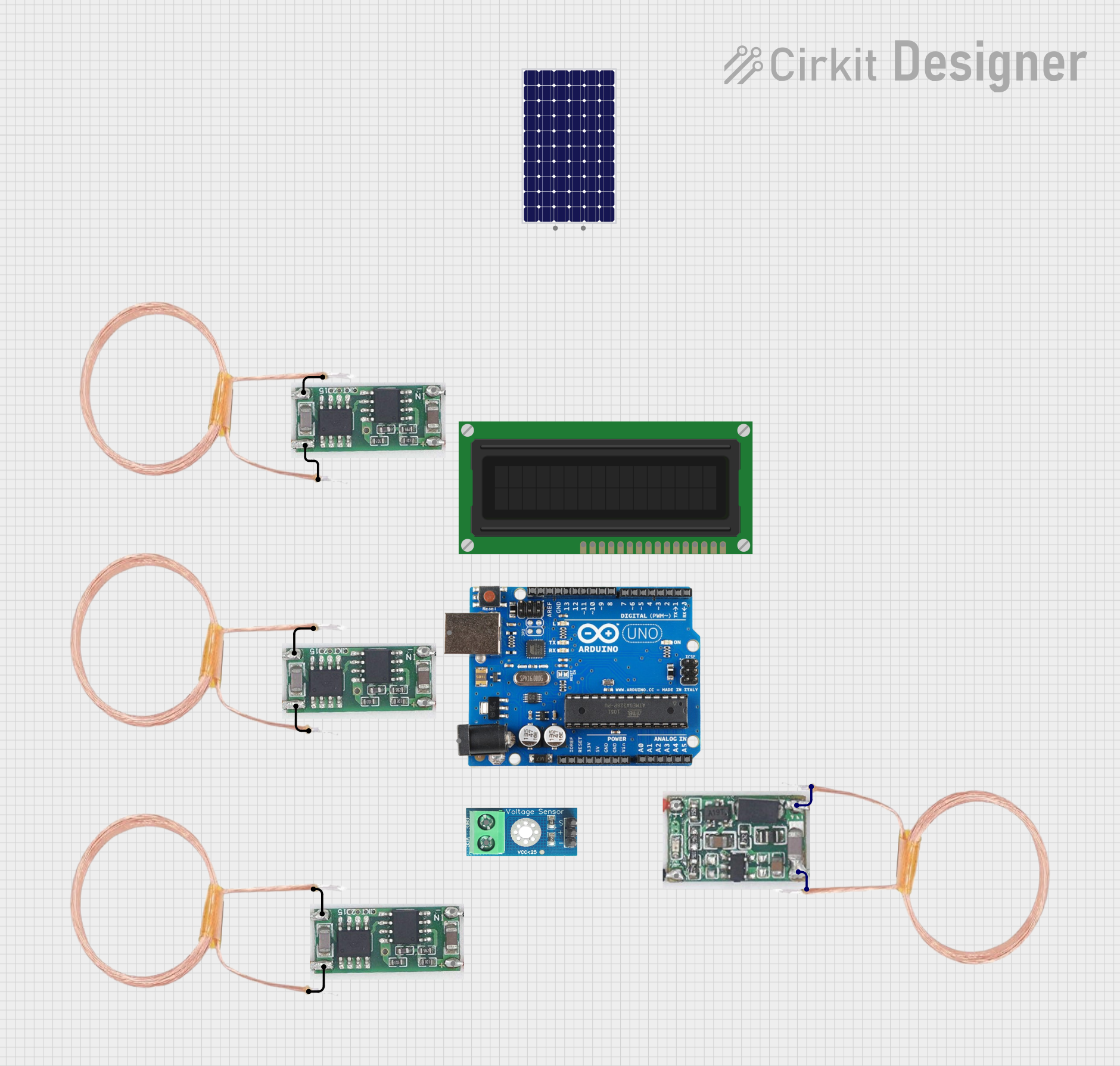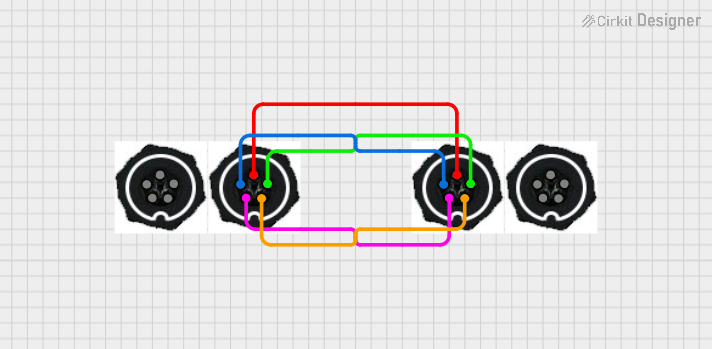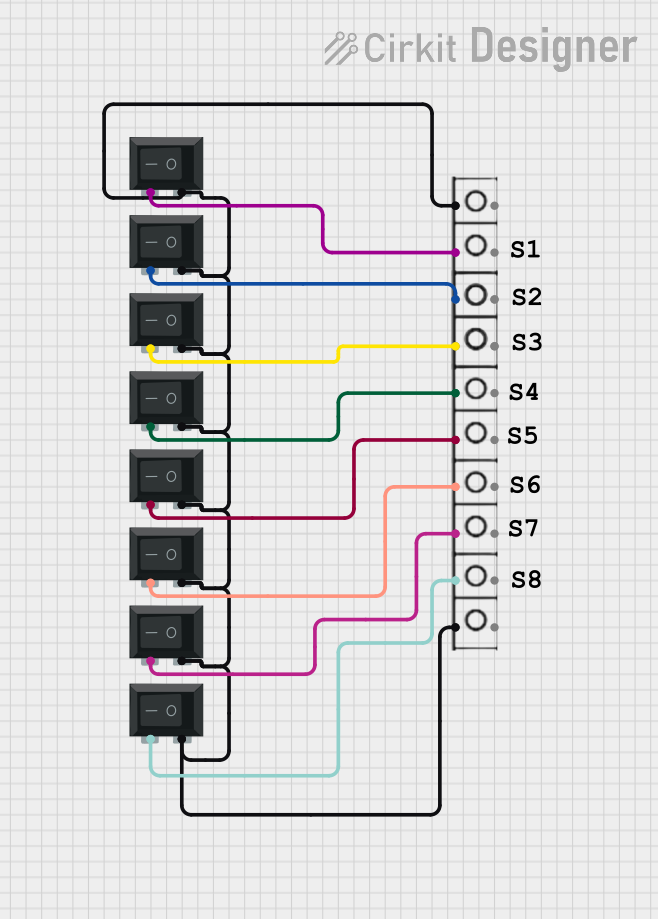
How to Use twisted pair wire: Examples, Pinouts, and Specs

 Design with twisted pair wire in Cirkit Designer
Design with twisted pair wire in Cirkit DesignerIntroduction
Twisted pair wire is a type of electrical cable consisting of pairs of insulated copper wires twisted together. This design helps reduce electromagnetic interference (EMI) and crosstalk between adjacent pairs, making it ideal for transmitting signals over long distances. Manufactured by DD, this component is widely used in telecommunications, networking, and data transmission applications.
Explore Projects Built with twisted pair wire

 Open Project in Cirkit Designer
Open Project in Cirkit Designer
 Open Project in Cirkit Designer
Open Project in Cirkit Designer
 Open Project in Cirkit Designer
Open Project in Cirkit Designer
 Open Project in Cirkit Designer
Open Project in Cirkit DesignerExplore Projects Built with twisted pair wire

 Open Project in Cirkit Designer
Open Project in Cirkit Designer
 Open Project in Cirkit Designer
Open Project in Cirkit Designer
 Open Project in Cirkit Designer
Open Project in Cirkit Designer
 Open Project in Cirkit Designer
Open Project in Cirkit DesignerCommon Applications and Use Cases
- Ethernet networking (e.g., Cat5e, Cat6 cables)
- Telephone lines
- Audio signal transmission
- Industrial control systems
- Security camera installations
Technical Specifications
Below are the key technical details for the twisted pair wire manufactured by DD:
| Parameter | Specification |
|---|---|
| Manufacturer | DD |
| Part ID | DD |
| Conductor Material | Copper (insulated) |
| Number of Pairs | 1 to 25 pairs (varies by cable type) |
| Wire Gauge | 22 AWG to 26 AWG |
| Insulation Material | PVC, PE, or other dielectric materials |
| Impedance | 100 ohms (typical for Ethernet cables) |
| Maximum Transmission Rate | Up to 10 Gbps (depending on cable category, e.g., Cat6a) |
| Operating Temperature | -20°C to 75°C |
| Voltage Rating | 300V (typical) |
| Shielding | Unshielded Twisted Pair (UTP) or Shielded Twisted Pair (STP) |
Pin Configuration and Descriptions
Twisted pair wires do not have traditional "pins" but instead consist of wire pairs. Below is a table describing the typical configuration for Ethernet cables (e.g., Cat5e or Cat6):
| Pin Number | Wire Color (TIA/EIA-568B Standard) | Signal |
|---|---|---|
| 1 | White/Orange | Transmit Data + (TX+) |
| 2 | Orange | Transmit Data - (TX-) |
| 3 | White/Green | Receive Data + (RX+) |
| 4 | Blue | Unused (or Power in PoE) |
| 5 | White/Blue | Unused (or Power in PoE) |
| 6 | Green | Receive Data - (RX-) |
| 7 | White/Brown | Unused (or Power in PoE) |
| 8 | Brown | Unused (or Power in PoE) |
Usage Instructions
How to Use Twisted Pair Wire in a Circuit
- Select the Appropriate Cable Type: Choose the correct category of twisted pair wire (e.g., Cat5e, Cat6) based on your application requirements, such as data rate and distance.
- Strip the Insulation: Use a wire stripper to carefully remove the outer jacket and expose the twisted pairs. Avoid damaging the insulation on individual wires.
- Terminate the Wires: For Ethernet applications, use an RJ45 connector and a crimping tool to terminate the wires. Follow the TIA/EIA-568A or TIA/EIA-568B wiring standard.
- Connect to Devices: Plug the terminated cable into the appropriate ports on networking devices, such as routers, switches, or computers.
- Test the Connection: Use a cable tester to verify continuity and proper wiring.
Important Considerations and Best Practices
- Twist Integrity: Maintain the twists in the wire pairs as much as possible to minimize EMI and crosstalk.
- Cable Length: Do not exceed the maximum recommended length (e.g., 100 meters for Ethernet) to avoid signal degradation.
- Shielding: Use shielded twisted pair (STP) cables in environments with high EMI, such as industrial settings.
- Bend Radius: Avoid sharp bends in the cable to prevent damage to the conductors and insulation.
Example: Connecting Twisted Pair Wire to an Arduino UNO
Twisted pair wire can be used to transmit signals between an Arduino UNO and other devices. Below is an example of using twisted pair wire for serial communication:
// Example: Serial communication using twisted pair wire
// Connect TX (pin 1) of Arduino UNO to RX of the other device
// Connect RX (pin 0) of Arduino UNO to TX of the other device
// Use a twisted pair for TX and RX to reduce interference
void setup() {
Serial.begin(9600); // Initialize serial communication at 9600 baud
Serial.println("Twisted Pair Wire Example");
}
void loop() {
if (Serial.available() > 0) {
// Read incoming data and echo it back
char received = Serial.read();
Serial.print("Received: ");
Serial.println(received);
}
}
Troubleshooting and FAQs
Common Issues Users Might Face
Signal Loss or Degradation:
- Cause: Exceeding the maximum cable length or using a low-quality cable.
- Solution: Use a repeater or switch for long distances, and ensure the cable meets the required specifications.
Crosstalk or Interference:
- Cause: Poorly maintained twists or using unshielded cables in high-EMI environments.
- Solution: Use shielded twisted pair (STP) cables and maintain the twists during installation.
Improper Termination:
- Cause: Incorrect wiring or loose connections in the RJ45 connector.
- Solution: Follow the TIA/EIA-568A or TIA/EIA-568B standard and use a cable tester to verify connections.
Physical Damage:
- Cause: Excessive bending, pulling, or crushing of the cable.
- Solution: Handle the cable carefully and avoid sharp bends or heavy loads.
FAQs
Q1: What is the difference between UTP and STP cables?
A1: UTP (Unshielded Twisted Pair) cables lack additional shielding, making them lighter and more flexible but more susceptible to EMI. STP (Shielded Twisted Pair) cables include a shielding layer to reduce EMI, making them suitable for high-interference environments.
Q2: Can twisted pair wire be used for power transmission?
A2: Yes, twisted pair wires can transmit power in applications like Power over Ethernet (PoE). However, ensure the cable meets the required power and current ratings.
Q3: How do I choose the right twisted pair cable for my application?
A3: Consider factors such as data rate, distance, EMI levels, and whether shielding is required. For example, use Cat6a for high-speed Ethernet and STP for industrial environments.
Q4: What is the maximum data rate supported by twisted pair wire?
A4: The maximum data rate depends on the cable category. For example, Cat6a supports up to 10 Gbps over 100 meters.